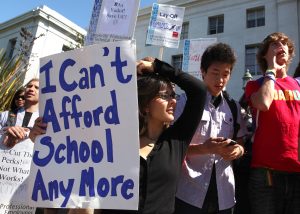The burden of student loans has become a defining issue in contemporary education, as it affects millions of students and graduates across the globe. In this article, we will delve into the student loan crisis, examining the challenges it poses, exploring potential solutions, and discussing its far-reaching impacts on higher education and society as a whole.
The Student Loan Landscape
A. The Soaring Debt
Over the past few decades, the cost of higher education has risen dramatically, far outpacing inflation rates. This has forced a significant number of students to rely on loans to finance their education. As a result, student loan debt has reached unprecedented levels, becoming a financial albatross for many.
B. Federal and Private Loans
There are two main types of student loans: federal and private. Federal loans are typically more borrower-friendly, with options for income-driven repayment plans, deferment, and even loan forgiveness programs. Private loans, on the other hand, often come with higher interest rates and fewer repayment options.

See Also: Understanding Student Loan Refinancing Rates: A Comprehensive Guide
Challenges Faced by Borrowers
A. Mounting Debt
The most pressing issue for borrowers is the massive debt load. Students graduate with tens of thousands of dollars in debt, sometimes even more. This debt can take decades to repay, delaying financial milestones like homeownership, starting a family, and saving for retirement.
B. High-Interest Rates
Interest rates on student loans, especially private loans, can be exorbitant. These rates can lead to significantly higher total repayments over the life of the loan.
C. Limited Repayment Options
While federal loans offer some flexibility in repayment plans, private loans often have less forgiving terms. Many borrowers struggle to make their monthly payments, especially when their income is low or inconsistent.
The Broader Impact
A. Economic Implications
The student loan crisis has ripple effects throughout the economy. Graduates who must allocate a significant portion of their income to loan repayments have less disposable income, affecting their ability to stimulate consumer spending and contribute to economic growth.
B. Social Implications
The burden of student loan debt also has social consequences. It can exacerbate income inequality, as those who can’t afford higher education without loans may face greater financial challenges than their debt-free counterparts.
See Also: Navigating Private Student Loans: A Comprehensive Guide
Potential Solutions
A. Loan Forgiveness Programs
One solution to the student loan crisis gaining traction is widespread loan forgiveness. Advocates argue that this approach can alleviate the financial burden on graduates and stimulate economic growth. However, critics argue that it may not address the root issues of rising education costs.
B. Tuition-Free Education
Another solution is to move towards tuition-free education, as seen in some European countries. While this model has its challenges, it can help reduce student loan debt for future generations.
C. Enhanced Financial Education
Empowering students with financial literacy can help them make more informed decisions about higher education financing. This, in turn, could reduce the need for excessive borrowing.
Conclusion
The student loan crisis is a complex issue that touches the lives of millions of students and graduates. Addressing it effectively requires a multifaceted approach, including policy changes, enhanced financial literacy, and innovative solutions to reduce the cost of higher education. By tackling the student loan crisis, society can help students and graduates achieve their financial goals while fostering a more equitable and economically prosperous future.